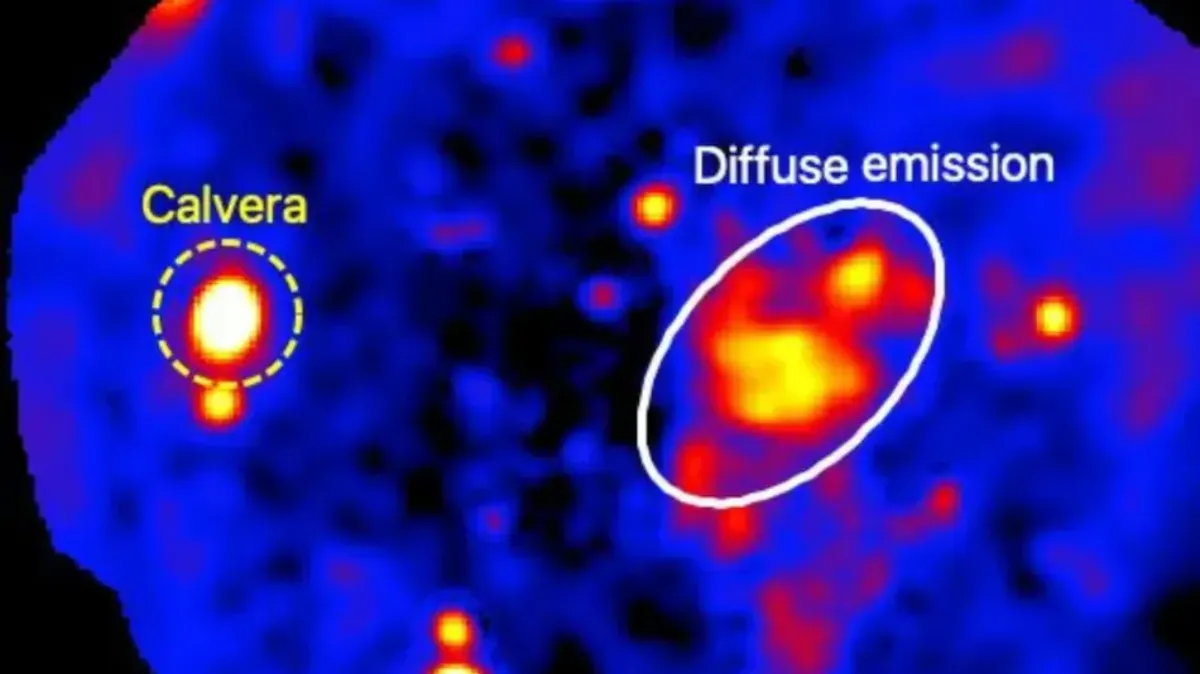| Summary |
|
Astronomers have confirmed that a pulsar named Calvera is speeding away from the remains of a supernova in one of the galaxy’s most unlikely regions. Located more than 6,000 light-years above the Milky Way’s crowded disk, Calvera challenges long-held ideas about where massive stars form and explode.
The discovery comes from combined radio and X-ray observations, which traced the pulsar’s path back to its birth site 10,000 to 20,000 years ago.
Calvera lies between 13,000 and 16,500 light-years from Earth, positioned in a thin region where very few stars exist. The galactic disk usually produces most of the stars heavier than eight times the Sun, the kind that end their lives in supernovae.
Above the disk, conditions are far less favorable for star formation. Calvera’s presence proves that at least one massive star did exist there and exploded to form the pulsar we see today.
Pulsars are the neutron stars that are collapsed remnants of supernovae. They are extremely dense, with more mass than the Sun packed into a sphere only 20 kilometers across.
Calvera was first identified in 2007 using data from the ROSAT X-ray satellite. It belongs to a rare group of neutron stars known as the Magnificent Seven, which glow strongly in X-rays but do not emit radio pulses. These stars are isolated and slowly cooling, making them useful for studying neutron star surfaces.
In 2022, the LOFAR radio telescope in Europe detected a faint ring of radio emission around Calvera. This hinted at the presence of a supernova remnant.
A team led by Emanuele Greco at Italy’s National Institute for Astrophysics then used XMM-Newton and other telescopes to examine the region in X-rays and other wavelengths. They confirmed that the pulsar’s motion aligns directly with the remnant’s center, pointing to its origin in the explosion.
When a massive star explodes, the blast is often uneven. That imbalance can fling the remaining neutron star outward at great speed, an effect known as a natal kick. Calvera appears to have received such a kick, sending it flying through the galaxy while the shell of hot gas and debris expanded behind it.
Even in this thin region of space, clumps of material around the remnant glowed in X-rays and gamma rays, offering clues about the original star.
Analysis suggests the progenitor star weighed around 15 times the mass of the Sun. Stars of this size live only a few million years before collapsing. Finding such a star far from the galactic plane raises questions about its origin.
It may have been a runaway star ejected from a cluster closer to the plane, or it could have formed in place under unusual conditions. Similar cases have been seen in the Gum Nebula, another region with rare off-plane massive stars.
Calvera shows that the outer regions of the galaxy are not as quiet as once thought. If one massive star formed and exploded there, more may be waiting to be discovered. For astronomers studying supernova remnants and pulsars, this means updating maps of where these objects are likely to appear. It also demonstrates that high-energy emissions can remain bright even in sparse environments.
Future facilities such as the Square Kilometre Array will help detect more unusual neutron stars and remnants in unexpected locations. Calvera, named after a movie villain for its solitary and fast-moving nature, serves as a reminder that the Milky Way still holds surprises. Careful work across radio, X-ray, and gamma-ray astronomy continues to reveal how stars live, die, and shape the galaxy.

